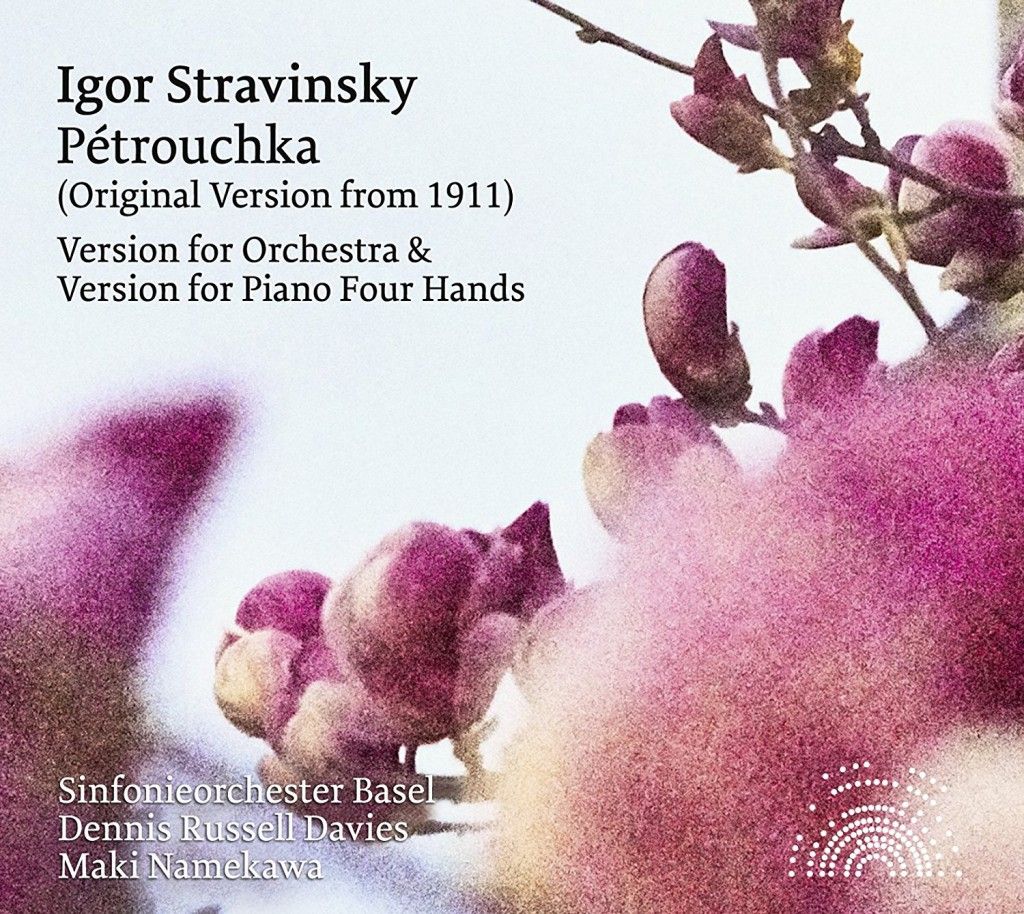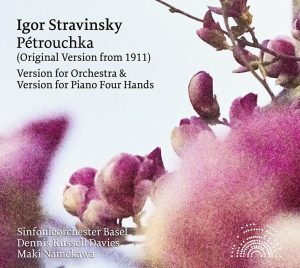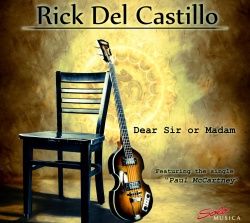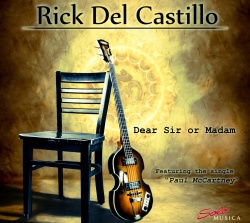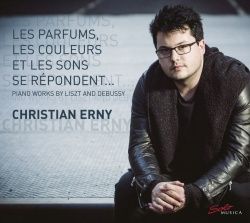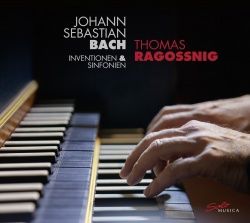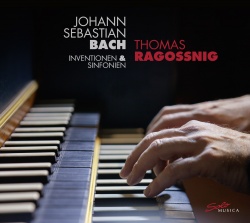Ensemble Raro – Being EaRNeST
Description
Ensemble Raro’s new recording of two rarely performed chamber music gems by Ernő Dohnányi – the Second Piano Quintet in E-flat Minor Op.26 (1914) and the Sextet Op. 37 in C Major (1935) for piano, violin, viola, cello, clarinet and horn – proposes to reassess these works, which are imbued with idealism, and to reflect upon the values encoded in them. It may communicate to the receptive listener something new about the world that surrounds us, since “it is the present that polarises the events into fore- and after-history” (W. Benjamin).
Tracklist
| 2. Klavierquintett es-Moll op. 26 | Ernst von Dohnányí | ||
| 1 | I Allegro non troppo | 9’50 | |
| 2 | II (Intermezzo). Allegretto | 4’52 | |
| 3 | III Moderato | 10’20 | |
| Sextett in C-Dur für Klavier, Violine, Viola, Violoncello, Klarinette und Horn op. 37 | Ernst von Dohnányí | ||
| 4 | I Allegro appassionato | 11’00 | |
| 5 | II Intermezzo. Adagio | 5’36 | |
| 6 | III Allegro con sentimento | 6’50 | |
| 7 | IV Finale. Allegro vivace, giocoso | 5’38 |
Islam Manafov – Chopin
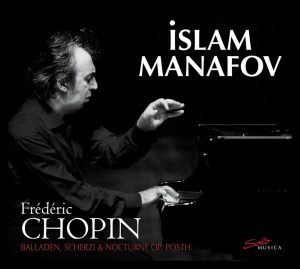 Artists: Islam Manafov
Artists: Islam Manafov
Title: Chopin: Balladen, Scherzi & Nocturne op. posth.
Catalogue No.: SM 246
Release: 09.09.2016
Description
With this first album, Islam Manafov connects with his listeners through the works of the Romantic genius Chopin, with whom he has felt a close emotional tie since his childhood.
Using his immense palette of nuances he takes his listeners on a journey beyond time with Chopin’s works that may be considered his most difficult, both technically and musically, with their differing moods, at times wild, at times childish, at times rebellious and at times full of longing…”
Islam Manafov was born in Baku, the capital city of Azerbaijan, and studied at the Baku Music School during the years 1977-1981. In 1979 he won 1st prize in the “Azerbaijan Young Pianists Competition”, attracting the attention of the musical scene. Following this achievement, at the age of 17, he performed S. Rachmaninov’s Piano Concerto No.3 under the world famous Maestro Niyazi Tagizade, to great acclaim.
As a “People’s Artist” of the Republic of Azerbaijan, Manafov continues his artistic life as a pianist, conductor and composer, while working as a Professor at Baku Music Academy and Yeditepe University in Istanbul.
Tracklist
| CD 1 | |||
| 1 | 1 – Ballade op.23 | 9:03 | Frédéric Chopin |
| 2 | 2 – Ballade op.38 | 7:38 | Frédéric Chopin |
| 3 | 3 – Ballade op.47 | 7:17 | Frédéric Chopin |
| 4 | 4 – Ballade op.52 | 11:58 | Frédéric Chopin |
| CD 2 | |||
| 1 | 1 – Scherzo op.20 | 10:36 | Frédéric Chopin |
| 2 | 2 – Scherzo op.31 | 9:50 | Frédéric Chopin |
| 3 | 3 – Scherzo op.39 | 7:20 | Frédéric Chopin |
| 4 | 4 – Scherzo op.54 | 11:05 | Frédéric Chopin |
| 5 | Nocturne cis moll op. Post | 5:24 | Frédéric Chopin |
Et Arsis – Brahms | Vasks
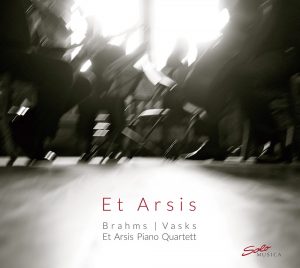 Artists: Et Arsis Piano Quartett
Artists: Et Arsis Piano Quartett
Title: Vasks & Brahms: Piano Quartets
Catalogue No.: SM 248
Release: 30.09.2016
Description
With its actual recording of Johannes Brahms Piano Quartet no. 1 in G minor (Op. 25), the Et Arsis Piano Quartet makes an independent, militant contribution to the discussion about the musical interpretation of Brahms.
The contemporary Latvian composer Peteris Vasks gives his music the experiences of his people during Soviet rule and transformation time_exp: With its unmistakable signature Et Arsis sets the bar high for the interpretation of Vasks’ sole piano quartet.
Tracklist
| Quartet for Violin, Viola, Violoncello and Piano | Peteris Vasks | ||
| 1 | I Preludio. Moderato | 04:33 | Peteris Vasks |
| 2 | II Danze. Allegro | 06:18 | Peteris Vasks |
| 3 | III Canti drammatici. Andante | 06:52 | Peteris Vasks |
| 4 | IV Quasi una passacaglia | 08:28 | Peteris Vasks |
| 5 | V Canto principale. Cantabile | 09:04 | Peteris Vasks |
| 6 | VI Postludio. Adagio | 03:04 | Peteris Vasks |
| Piano quartet No. 1 G-minor, op. 25 | Johannes Brahms | ||
| 7 | Allegro | 14:27 | Johannes Brahms |
| 8 | Intermezzo. Allegro (ma non troppo) | 08:05 | Johannes Brahms |
| 9 | Andante con moto | 09:41 | Johannes Brahms |
| 10 | Rondo alla Zingarese. Presto | 08:48 | Johannes Brahms |
Elena Moșuc – L’amore è poesia
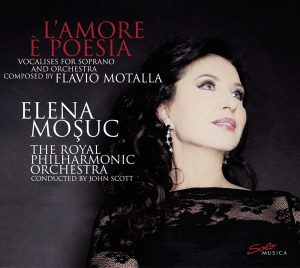 Artists: Elena Moșuc, Flavio Motalla
Artists: Elena Moșuc, Flavio Motalla
Title: L Amore e Poesia – Vocalises for Soprano and Orchestra
Catalogue No.: SM 247
Release: 30.09.2016
Description
The compositions feature a wordless soprano, even though I was urged by several of my friends to use a libretto at first. However, it occurred to me early on that the music could be vocal but without relying on words. Not only might a written text present a distraction for the audience, but even more so its rhythmic pattern would have interfered too much with the organic flow of the composition. Also, given the subject matter, I strongly felt that the music should speak for itself.
The pieces are written in a very lush romantic style, both lyrical in expression and epic in scale. At times notably nostalgic, sometimes opulent but never cloying. The soaring melodies are clearly a nod to the likes of Erich Wolfgang Korngold and Max Steiner, whose film music from the golden era of Hollywood has always been an inspiration.
This world premiere recording has been a long time in the making and I feel very fortunate to have received the generous support of so many incredibly talented people along the way: soprano Elena Moșuc is performing under the direction of conductor John Scott and the Royal Philharmonic Orchestra. The recording took place at the legendary Abbey Road Studios in London.
Flavio Motalla, Los Angeles 2016
Tracklist
| 1 | Canzonetta for Soprano and Orchestra | 11:43 | Flavio Mario Motalla |
| 2 | Poesia per una Sognatrice | 11:50 | Flavio Mario Motalla |
| 3 | Intermezzo | 4:50 | Flavio Mario Motalla |
| 4 | Le Départ | 11:38 | Flavio Mario Motalla |
| 5 | En Souvenir d’un Amour Perdu | 11:49 | Flavio Mario Motalla |
| Total | 52:06 |
La Scintilla dei Fiati – Die Entführung aus dem Serail
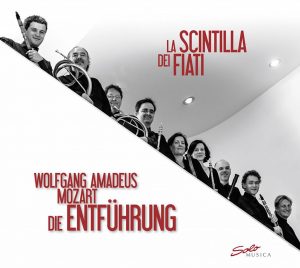 Artists: La Scintilla dei Fiati
Artists: La Scintilla dei Fiati
Title: Die Entführung aus dem Serail, Bearbeitung für Harmoniemusik
Catalogue No.: SM 244
Release: 22.07.2016
Description
The wind ensemble “La Scintilla dei Fiati” is composed of members of the “Orchestra La Scintilla” at the Zurich Opera.
Tracklist
| 1 | Ouvertüre | 3:48 |
| 2 | Nr.1: “Hier soll ich dich denn sehen” | 2:00 |
| 3 | Nr.2: “Solche hergelauf’ne Laffen” | 3:43 |
| 4 | Nr.3: “O wie ängstlich” | 2:43 |
| 5 | Nr.4: “Doch wie schnell schwand meine Freude” | 3:19 |
| 6 | Nr.5: “Durch Zärtlichkeit und Schmeicheln” | 2:45 |
| 7 | Nr.6: “Ich gehe, doch rate ich dir” | 2:40 |
| 8 | Nr.7: “Martern aller Arten” | 8:44 |
| 9 | Nr.8: “Welche Wonne, welche Lust” | 2:21 |
| 10 | Nr.9: “Frisch zum Kampfe!” | 2:43 |
| 11 | Nr.10: “Vivat Bacchus! Bacchus lebe!” | 1:54 |
| 12 | Nr.11: “Wenn der Freude Tränen fließen” | 3:38 |
| 13 | Nr.12: “Ach Belmonte!” | 2:41 |
| 14 | Nr.13: “Ich baue ganz auf Deine Stärke” | 4:44 |
| 15 | Nr.14: “O, wie will ich triumphieren” | 2:53 |
| 16 | Nr 15: “Welch ein Geschick! o Qual der Seele!” | 7:02 |
| 17 | Nr.16: Finale | 1:57 |
Janet Perry – German and French Songs
Description
What do these enigmatic words mean…? I believe that it takes a lifetime of loving music to know.
Thinking back on my own life, classical music has truly made me who I am today. It has been a constant companion since my earliest childhood, and, whilst many may recall certain toys or birthday parties, my first memories all include music. My home was always filled with the sound of someone practicing or a marvellous radio broadcast. Everyone in our immediate family was musical, and neighbours who passed by our house always heard some kind of instrument or voice floating out through the windows. It was just a normal part of our everyday life.
When I was two, I received a Christmas present that would have a profound impact on my childhood: it was a book called “Mozart the Wonder Boy”. For some strange reason, little Wolferl (Wolfgang) and his sister Nannerl (Marianne) became my dearest fantasy playmates, and aspiring to become an accomplished musician (like they were), soon became a very cool thing for me. My mother was the first to introduce me to his works by singing me lieder and arias, while accompanying herself on the piano. Standing there by her side with my pigtails and all, I was so profoundly moved by the beauty of his melodies, that something inside me knew right away that I would never want that feeling to go away. Although we weren’t “well off’, seeing my growing passion for music, somehow my parents always managed to provide the right things to improve my artistic skills, including lessons in piano, violin, ballet, drama, and voice. My love for Mozart and his early genius grew year after year, and was a constant inspiration to me throughout my youth. It was this small seed that two decades later led to an international singing career and to the Mozart songs on this CD.
At the Curtis Institute of Music I had the privilege to live amongst some of the most talented musicians of my generation, and to get to know and perform many works of the great masters with them. My voice had not reached maturity yet, but the timbre and vocal range held a promise of the roles I would sing in the future. I was very lucky to work with teachers and coaches who respected my young voice, and didn’t push me into unsuitable repertoire. Thanks to this I was able to maintain the youth in my voice throughout my career, and to discover new facets of the same pieces year after year.
The songs of Mozart, Debussy, Faurè, Duparc, and Strauss have been in my repertoire for a long time, we are old friends who enjoy music – and the silence between the notes, together.
Special thanks to Jean Lemaire, my partner in many Lied projects, with his valuable insights as to repertoire and interpretation, and ready for the unexpected. I thank him for introducing me to Hubert Haas, who convinced us to let him produce this recital recording.
Tracklist
| 1 | Dans un bois solitaire | 2:35 | W. A. Mozart |
| 2 | Oiseaux, si tous les ans | 1:23 | W. A. Mozart |
| 3 | Das Veilchen | 2:17 | W. A. Mozart |
| 4 | Abendempfindung | 4:29 | W. A. Mozart |
| 5 | Kornblumen | 1:46 | Richard Strauss |
| 6 | Mohnblumen | 1:11 | Richard Strauss |
| 7 | Epheu | 2:44 | Richard Strauss |
| 8 | Wasserrose | 3:28 | Richard Strauss |
| 9 | Glocken von Marling | 2:26 | Franz List |
| 10 | Es muss ein Wunderbares sein | 1:32 | Franz List |
| 11 | O quand je dors | 4:05 | Franz List |
| 12 | Chanson d’ amour | 1:57 | Gabriel Fauré |
| 13 | Clair de lune | 2:47 | Gabriel Fauré |
| 14 | Notre amour | 1:47 | Gabriel Fauré |
| 15 | L’ Invitation au voyage | 3:59 | Henri Duparc |
| 16 | Soupir | 2:44 | Henri Duparc |
| 17 | Ranz du Vacher d’ Appenzell | 3:17 | Ciacomo Meyerbeer |
| 18 | Phidylé | 5:26 | Henri Duparc |
| 19 | La Romance d’ Ariel | 4:37 | Claude Debussy |
| 20 | Romance | 2:10 | Claude Debussy |
| 21 | Pierrot | 1:27 | Claude Debussy |
| 22 | Fantoches | 1:13 | Claude Debussy |
| 23 | Fleur Jetée | 1:27 | Gabriel Fauré |
Sinfonieorchester Basel – Igor Strawinsky – “Pétrouchka
Artists: Sinfonieorchester Basel
Title: Igor Strawinsky – “Pétrouchka (Originalversion from 1911)” – Version for Orchestra and for Piano Four Hands
Catalogue No.: SOB11
Release: 03.06.2016
Description
Originally planned as a Piano Concerto, Stravinsky rewrote the music about the Russian carnival figure Petrushka into a ballet, following an idea of ballet impresario Sergei Diaghilev. When the oevre was performed on 13 June 1911 at the Théâtre du Châtelet, it was almost unanimously hailed as a fascinating synthesis of the art of music, dance and painting, and a milestone in the development of a genuinely modern ballet. Parallel to the orchestra score Stravinsky created a piano version; primarily used for studies and rehearsals. Recently, however, also the four-hand piano version gained increasing popularity in the concert hall.
Dennis Russell Davies is since 2009 chief conductor of the Sinfonieorchester Basel. In addition to numerous other recordings the Stravinsky trilogy originated under his conductorship. Dennis Russell Davies recorded all three Stravinsky piano versions with his partner Maki Namekawa.
Tracklist
| Pétrouchka (orchestral version) | |
| I Fete poulaire | 5:53 |
| Le Tour de Passe-Passe | 1:41 |
| Danse Russe | 2:55 |
| 10:29 | |
| II Chez Pétrouchka | 4:33 |
| 4:33 | |
| III Chez le Maure | 3:04 |
| Danse de la Balerine | 0:43 |
| Valse | 2:12 |
| Le Maure et la Bellerine/Apparition de Pétrouchka | 1:01 |
| 7:00 | |
| IV Fete populaire de Semaine Grasse | 1:09 |
| Danse des Nounous | 5:02 |
| Danse des Cochers et de Palefreniers | 2:04 |
| Les Deguises | 5:23 |
| 13:38 | |
| Pétrouchka (piano version) | |
| I Fete poulaire | 5:56 |
| Le Tour de Passe-Passe | 2:14 |
| Danse Russe | 3:09 |
| 11:19 | |
| II Chez Pétrouchka | 4:49 |
| 4:49 | |
| III Chez le Maure | 3:03 |
| Danse de la Balerine | 0:45 |
| Valse | 2:13 |
| Le Maure et la Bellerine/Apparition de Pétrouchka | 1:11 |
| 7:12 | |
| IV Fete populaire de Semaine Grasse | 1:25 |
| Danse des Nounous | 5:55 |
| Danse des Cochers et de Palefreniers | 2:19 |
| Les Deguises | 5:51 |
| 15:30 |
Rick Del Castillo – Dear Sir or Madam
Description
After moving to Austin in 1995 my younger brother Mark and I formed Del Castillo in 2000. Our band was a fiery blend of old world Gypsy Flamenco meets Rock n Roll. It was here where we met film director Robert Rodriguez. We soon formed a movie band called Chingon blending Del Castillo’s raw energy with Rodriguez’s explosive films; a match made in heaven. Throughout all this I kept my early British musical influences tucked in my back pocket, primarily The Beatles, Queen, ELO, Led Zeppelin, Pink Floyd and David Bowie (Hunky Dory period). The Beatles however set the bar for the rest listed. Their melodies were second to none. I’ve been writing British style songs for some time but it was recently that I decided to make a video for my song “Paul McCartney” and make it a personal goal to have him hear it and possibly even meet the man. These five songs are an amalgamation of my British heroes listed above and pay tribute to their incredible originality and their influence on me.
Rick del Castillo
Tracklist
| 1 | Paul McCartney | 4:01 | Rick del Castillo |
| 2 | Never | 2:42 | Rick del Castillo |
| 3 | What I Feel | 2:52 | Rick del Castillo |
| 4 | I’d Like To Let You Know | 3:54 | Rick del Castillo |
| 5 | Letter To God | 3:59 | Rick del Castillo |
Christian Erny – Piano works by Liszt and Debussy
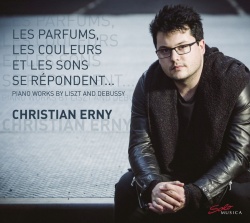 Artists: Christian Erny
Artists: Christian Erny
Title: Les parfums, les couleurs et les sons se répondent… Piano works by Liszt and Debussy
Catalogue No.: SM 238
Release: 29.04.2016
Description
The programme’s central theme is encapsulated in the words “Les parfums, les couleurs et les sons se répondent …”, anextract from the poem “Correspondances” in Charles Baudelaire’s Les Fleurs du malcollection, which Debussy esteemed extremely highly and parts of which he set to music.
This programme presents also four works of Franz Liszt: the introduction is made up of two of the Années de pèlerinage – Deuxième année – Italiefrom his middle period; in the course of the programme, there follow two late works, both of which Debussy admired: Unstern! forms a commentative interpolation in the middle of the Debussy cycle; the nocturne En rêveends the musical journey by returning us to the contemplative mood of the opening number.
Tracklist
| Années de pèlerinage – Deuxième année – Italie | Franz Liszt (1811-1886) | |
| Sposalizio | 8:03 | Franz Liszt |
| Il penseroso | 4:07 | Franz Liszt |
| Préludes – Premier livre | Claude Debussy (1862-1918) | |
| Danseuses de Delphes | 3:21 | Claude Debussy |
| Voiles | 4:06 | Claude Debussy |
| Le vent dans la pleine | 2:14 | Claude Debussy |
| «Les sons et les parfums tournent dans l’air du soir…» | 4:01 | Claude Debussy |
| Les collines d’Anacapri | 3:31 | Claude Debussy |
| Des pas sur la neige | 4:21 | Claude Debussy |
| Ce qu’a vu le vent d’ouest | 3:52 | Claude Debussy |
| Unstern! Sinistre, disastro | Franz Liszt (1811-1886) | |
| Unstern! Sinistre, disastro | 4:54 | Franz Liszt |
| Prèludes – Premier livre | Claude Debussy (1862-1918) | |
| La fille aux cheveux de lin | 2:42 | Claude Debussy |
| La serenade interrompue | 2:54 | Claude Debussy |
| La cathédrale engloutie | 6:06 | Claude Debussy |
| La danse de puck | 3:11 | Claude Debussy |
| Minstrels | 2:49 | Claude Debussy |
| En rêve | Franz Liszt (1811-1886) | |
| En rêve | 2:51 | Franz Liszt |
Thomas Ragossnig – J.S. Bach: Inventionen und Sinfonien
Artists: Thomas Ragossnig
Title: J.S. Bach: Inventionen und Sinfonien BWV 772-801
Catalogue No.: SM 236
Release: 29.04.2016
Description
The 1723 fair copy of both the Inventions and the Sinfonias has the keys ordered according to the ascending scale (C major / C minor; D major / D minor etc.). There is however no compelling reason to perform them that way; there are musically more meaningful and attractive sequences.
Thomas Ragossnig presents one of them on this CD for the first time. He mixes the Inventions and Sinfonias in the same key and performs them in groups of two or four.
The result is a musically exciting sequence of Inventions and Sinfonias that gives the listener the opportunity to linger longer in each key, as in a Baroque suite.
Thomas Ragossnig zestfully interprets the various musical affections in these miniatures, so that these complex works function as a musically meaningful and stimulating cycle and not only as “contrapuntal references”.
Tracklist
| 1 | Inventio 1 C-Dur, BWV 772 | 1:16 | Johann Sebastian Bach |
| 2 | Inventio 2 c-moll, BWV 773 | 2:07 | Johann Sebastian Bach |
| 3 | Sinfonia 1 C-Dur, BWV 787 | 1:10 | Johann Sebastian Bach |
| 4 | Sinfonia 2 c-moll, BWV 788 | 2:05 | Johann Sebastian Bach |
| 5 | Sinfonia 8 F-Dur, BWV 794 | 1:14 | Johann Sebastian Bach |
| 6 | Inventio 9 f-moll, BWV 789 | 2:08 | Johann Sebastian Bach |
| 7 | Sinfonia 9 f-moll, BWV 795 | 3:20 | Johann Sebastian Bach |
| 8 | Inventio 8 F-Dur, BWV 779 | 1:00 | Johann Sebastian Bach |
| 9 | Inventio 14 B-Dur, BWV 785 | 1:31 | Johann Sebastian Bach |
| 10 | Sinfonia 14 B-Dur, BWV 800 | 2:01 | Johann Sebastian Bach |
| 11 | Inventio 5 Es-Dur, BWV 776 | 1:39 | Johann Sebastian Bach |
| 12 | Sinfonia 5 Es-Dur, BWV 791 | 3:13 | Johann Sebastian Bach |
| 13 | Inventio 11 g-moll, BWV 782 | 1:48 | Johann Sebastian Bach |
| 14 | Sinfonia 10 G-Dur, BWV 796 | 1:09 | Johann Sebastian Bach |
| 15 | Sinfonia 11 g-moll, BWV 797 | 2:30 | Johann Sebastian Bach |
| 16 | Inventio 10 G-Dur, BWV 781 | 0:56 | Johann Sebastian Bach |
| 17 | Inventio 3 D-Dur, BWV 774 | 1:07 | Johann Sebastian Bach |
| 18 | Sinfonia 3 D-Dur, BWV 789 | 1:17 | Johann Sebastian Bach |
| 19 | Inventio 4 d-moll, BWV 775 | 0:55 | Johann Sebastian Bach |
| 20 | Sinfonia 4 d-moll, BWV 790 | 1:52 | Johann Sebastian Bach |
| 21 | Sinfonia 12 A-Dur, BWV 798 | 1:32 | Johann Sebastian Bach |
| 22 | Sinfonia 13 a-moll, BWV 799 | 1:53 | Johann Sebastian Bach |
| 23 | Inventio 13 a-moll, BWV 784 | 1:06 | Johann Sebastian Bach |
| 24 | Inventio 12 A-Dur, BWV 783 | 1:22 | Johann Sebastian Bach |
| 25 | Inventio 7 e-moll, BWV 778 | 1:42 | Johann Sebastian Bach |
| 26 | Sinfonia 6 E-Dur, BWV 792 | 1:26 | Johann Sebastian Bach |
| 27 | Sinfonia 7 e-moll, BWV 793 | 2:37 | Johann Sebastian Bach |
| 28 | Inventio 6 E-Dur, BWV 777 | 3:23 | Johann Sebastian Bach |
| 29 | Inventio 15 h-moll, BWV 786 | 1:13 | Johann Sebastian Bach |
| 30 | Sinfonia 15 h-moll, BWV 801 | 1:27 | Johann Sebastian Bach |
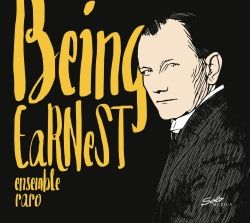
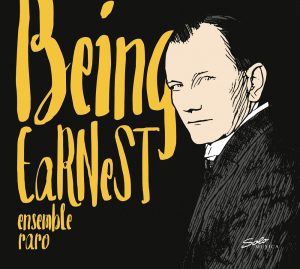

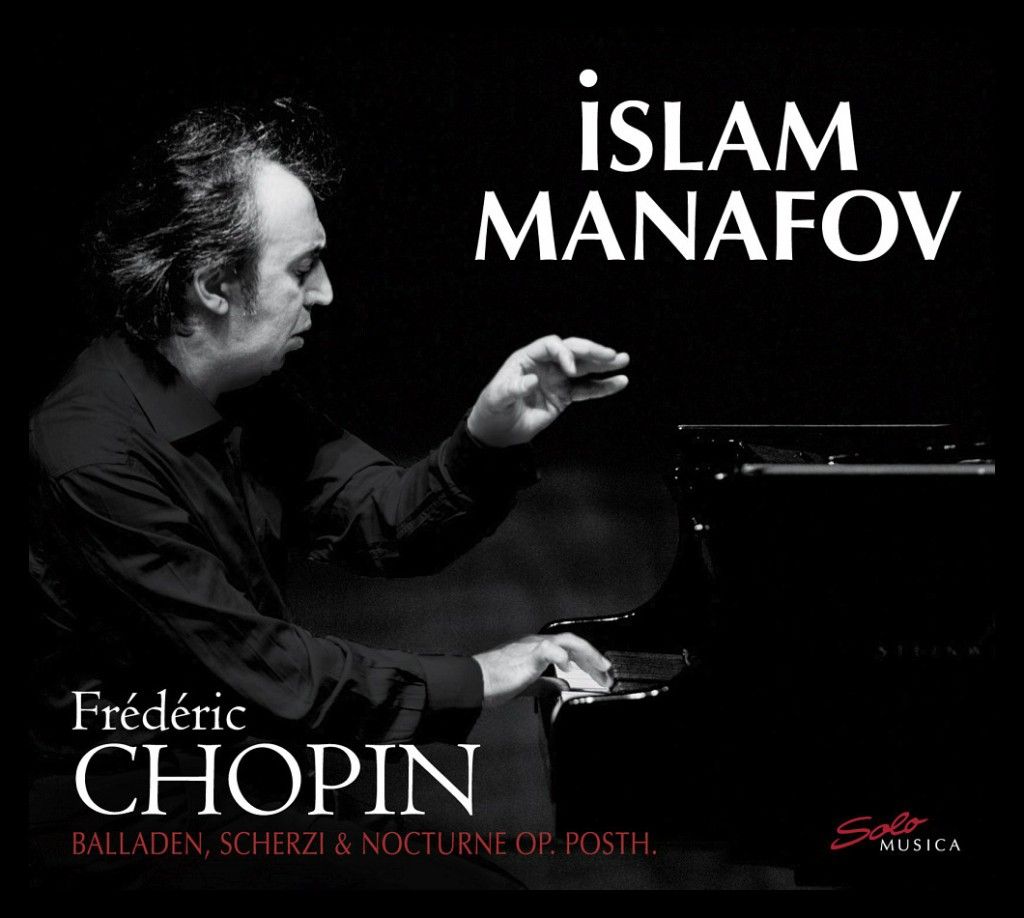
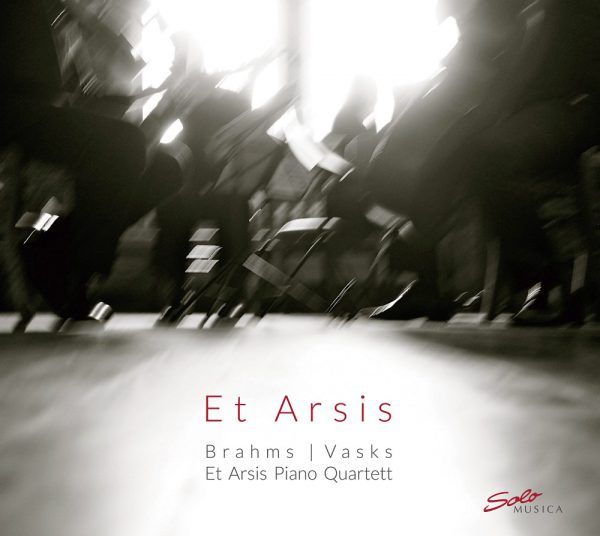
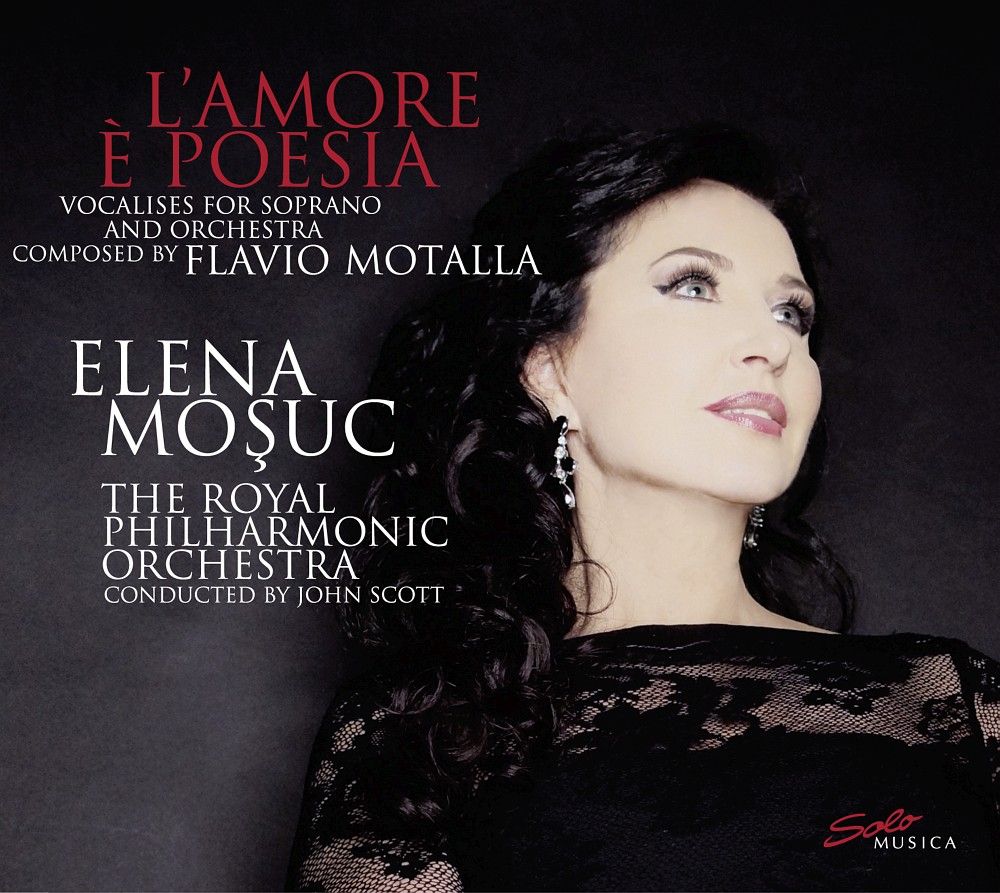
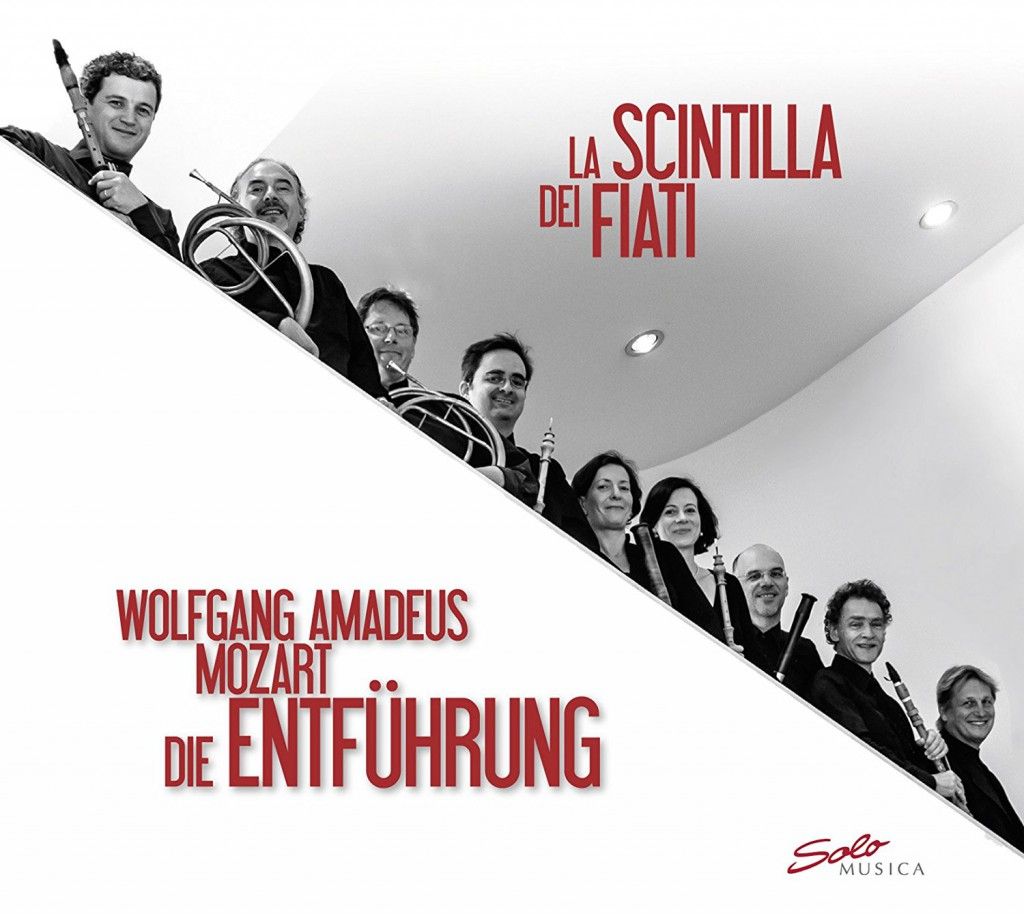
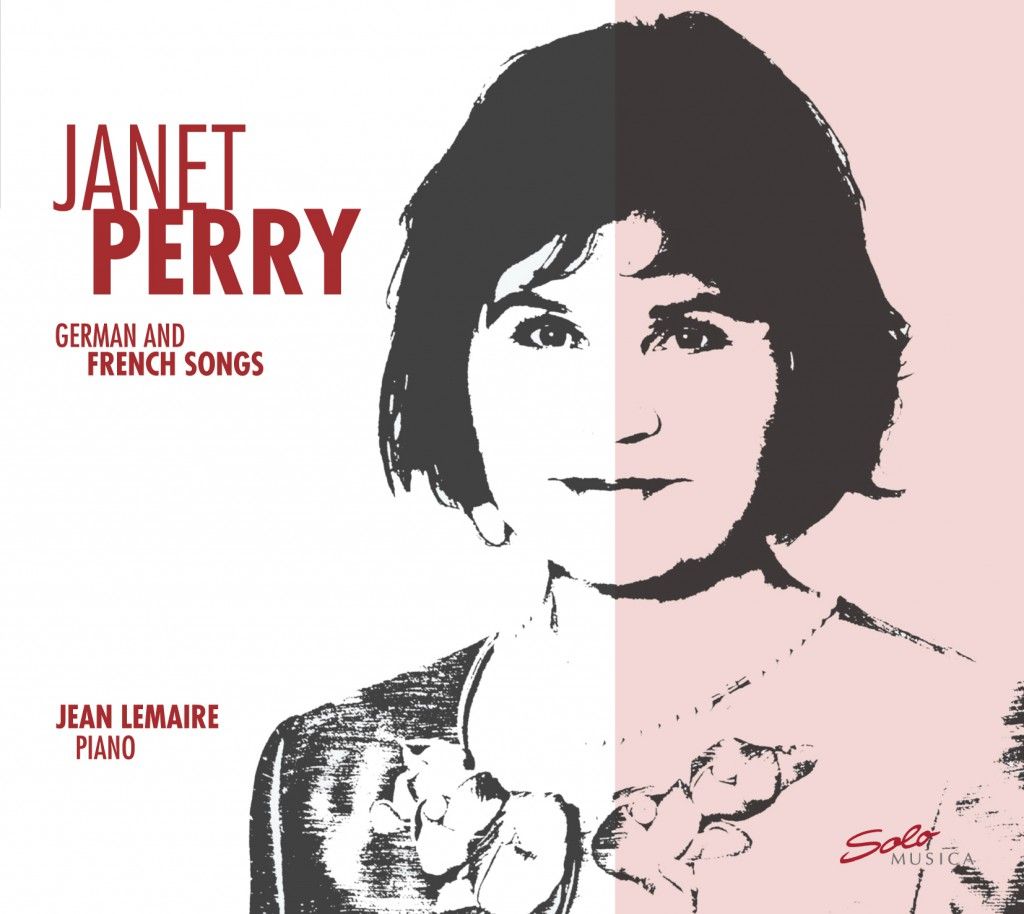
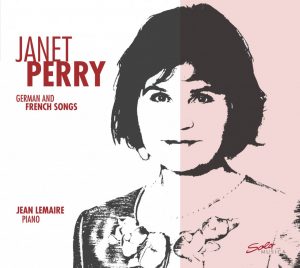 Artists:
Artists: 